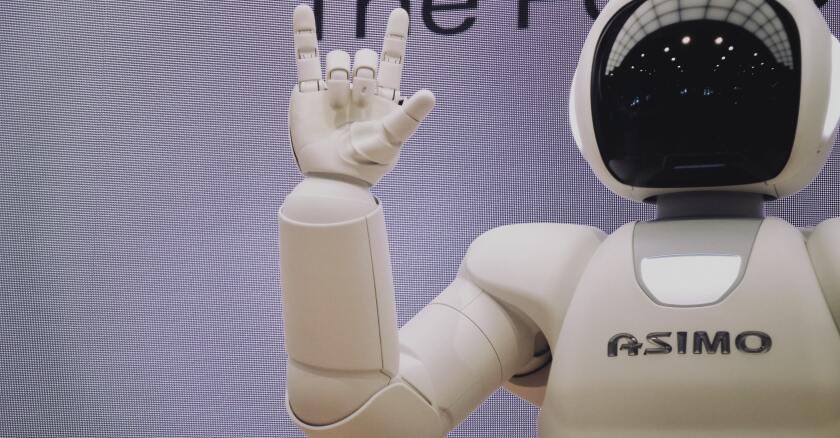Over the years, robotics have been woven into curricula and research in higher education to help prepare students for future career opportunities. Robotics labs and workshops have created important learning environments for real-world experiences and hands-on training. When appropriately integrated into a curriculum, robotics experiences can provide students with critical creative-thinking and problem-solving skills.
The main barriers to the widespread adoption of robotics may be cost and lack of training. The key to bridge this gap may be to develop and foster collaborations and partnerships between corporate and academic institutions. To provide a glimpse of what may lie ahead for higher education, below are some innovative developments in the field worth highlighting.
STATE OF ROBOTICS 2023
In the world of business and science, the utilization of operational robotics has exploded. The International Federation of Robotics, a nonprofit organization for industry professionals, identified five major trends in robotics for 2023, including:
- Robotics becoming more energy efficient.
- The reshoring of robotic production.
- Robots becoming easier to use.
- AI and digital automation.
- Old robots getting a second life.
Through innovation and effective design, robotic equipment is becoming easier to use. With the integration of AI and digital automation, robotic functions and power continues to grow. Legacy robotic equipment can gain a “second life” by innovative updating and retrofitting, which can lower costs and save resources. Each of these trends are working in concert to provide an exciting road map for future robotics innovations.
AI WILL ENHANCE ROBOTICS
Almost any discussion of information technology today will eventually gravitate to artificial intelligence (AI), and the field of robotics is no exception. Rapid advances in AI are helping robots mimic human behaviors. While robotics and AI are often referred to in unison, they each have specific definitions. As Thomas Helfrich in Forbes described last year, “Robotics is an aspect of computer science and engineering in which machines are built and programmed to perform tasks without human interference. AI, however, encompasses systems that emulate the human mind to learn, solve problems and make decisions independently without needing the already-programmed instructions.” In considering the future of robotic AI, tech writer John Terra said in an article for the online-course platform Simplilearn, “Artificial Intelligence increases human-robot interaction, collaboration opportunities, and quality. The industrial sector already has co-bots, which are robots that work alongside humans to perform testing and assembly … Robots that act and think more like people can integrate better into the workforce and bring a level of efficiency unmatched by human employees.”
HUMAN-LIKE ROBOTS
One of the best examples of robots mimicking human actions and behaviors is in the innovations of Boston Dynamics, which was founded in 1992 as a spin-off from MIT — a good illustration of the connection between higher education and corporate. The tagline on the company’s website is, “Changing your idea of what robots can do.”
Since the mid-1990s, Boston Dynamics has developed some of the most sophisticated robotic equipment, covering program needs such as inspection, site management, automation, safety and security, and research and development. One of the most publicized and complex robots is Atlas, described by Boston Dynamics as the “most dynamic humanoid robot.” Boston Dynamics states, “Atlas is a research platform that allows us to push the limits of whole-body mobility and bimanual manipulation. An advanced control system and state-of-the-art hardware give the robot the power and balance to demonstrate advanced athletics and agility.”
Atlas has demonstrated important levels of dexterity and pushes the boundaries of a robot’s ability to approximate or exceed a human’s complex movements. The company made a light-hearted YouTube video illustrating the ability of Atlas, and another robot called Spot, as they move to the music of Berry Gordy’s “Do You Love Me?” These examples dynamically illustrate the complex movement, balance and coordination robots are capable of.
PARTNERSHIPS WITH CORPORATE AND HIGHER EDUCATION
Nurturing the growth of robotics in education can be accomplished through strategic corporate partnerships. According to its website, Boston Dynamics promotes “research-ready functionality to jumpstart innovation.” The company uses the robot called Spot to help students learn and understand the potential for a wide variety of applications. Spot, which looks like a robotic dog, can accomplish many tasks, most notably providing insights into routine operations and site health, and analyzing and responding to hazardous environments. The company states, “Working with Spot excites students, driving recruitment and classroom engagement, while preparing your students for a future where robots are commonplace.”
ROBOTIC LEARNING ENVIRONMENTS
There are a wide variety of opportunities to learn about robotics in higher education.
Carnegie Mellon Robotics Academy studies how educators can use robots to teach computer science, science, technology, engineering and mathematics (CS-STEM). Their mission is to use educational robotics for STEM opportunities for students.
The University of Colorado Boulder houses a robotics program that incorporates engineering, mathematics and AI while exploring applications for robots in industrial, defense and economic sectors.
Bowling Green State University provides a bachelor's degree in robotics engineering which focuses on preparing students to be leaders in robotics and automation industries.
Northwestern University has a master’s program for up to 20 students at a time to work on research projects in aerial robotics, haptics, bio-inspired sensing and prosthetic engineering.
There are many robotics programs worldwide which focus on a wide variety of disciplines and research. The future of robotics will enhance innovative learning, help to bridge the digital divide and provide opportunities for diverse learners. To ensure success in the field of robotics in higher education, there will be a need for sustained investment, training, partnerships and innovation. Woven together, these elements can create an exciting tapestry of opportunities for both students and faculty.









